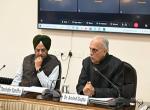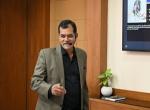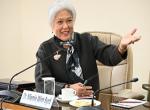Talk by Pravrajika Divyanandaprana, Monastic Member of Ramakrishna Sarada Mission and Principal, Nivedita Vidyamandir, New Delhi
Dr. Arvind Gupta, Director, VIF, welcomed the speaker and introduced the theme. He highlighted that in today’s world, notwithstanding how much we possess, there is much conflict in society. The reason for this is that we can no longer connect with our values; we are defensive, we hesitate to talk about values and civilization. Swami Vivekananda’s great breakthrough, at a time when India was a subject nation, was his proclamation that India is the teacher of the world in matters of spirituality. Sister Nivedita took forward Swamiji’s vision. She studied deeply and loved dearly anything to do with India. She contributed to various fields such as education, art, politics and so on. Most important in today’s context is her thought on Indian nationalism.
Pr. Divyanandaprana started by pointing out the curious paradox that was Nivedita—Irish by birth, English by education, yet some Indians of her times doubted if there was anybody like her among Indians who loved and understood India as much. The source of this immense love for and understanding of India in Nivedita was Vivekananda. When he was travelling across the length and breadth of this country, he saw three visions regarding India. He saw the first vision somewhere close of Punjab. He saw a mighty river and a rishi sitting on the banks, chanting a hymn to Sarasvati. In Dwarka, he saw another spiritual vision. Meditating, after having seen the ancient ruins of the city, he saw in his vision a resplendent India. The most famous among his visions of India was the one he saw in Kanyakumari, where he meditated for three days and three nights and saw the past, present and future of India—the vision of India rising. These visions are not intellectual exercises, but spiritual experience of a realized soul; hence, these are bound to be true. The word Bharata itself means that which revels in the light of consciousness. The civilization of this country pre-dates all civilizations and religions of the world. Despite its apparent diversity, it is united by the spiritual ideals that its people cherish. The distinctness of the Indian civilization is that its people had attained the highest possible reaches of awareness. This is the unique message of Yoga? and Vedanta. Nivedita could comprehend this essence of India because of her association with Swamiji.
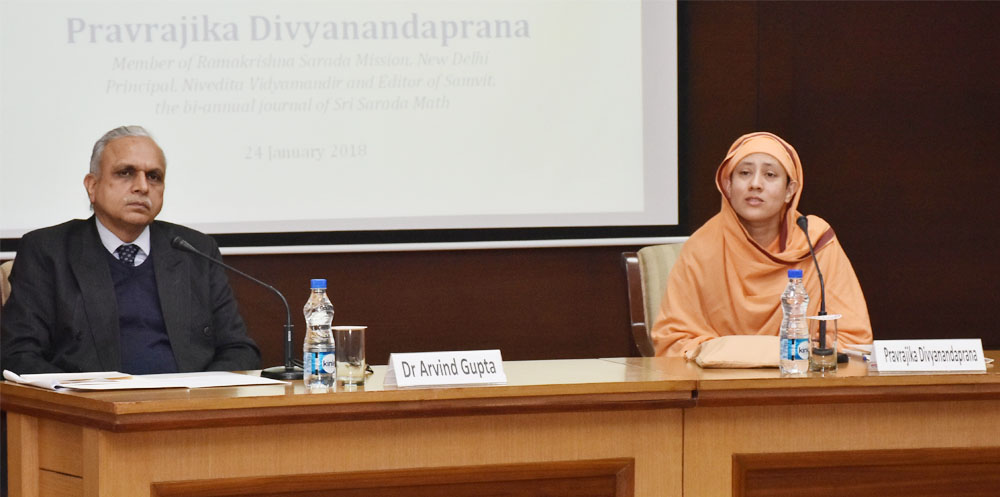
Mataji underscored that Swamiji was the embodiment of a delicate balance between a proud nationalist and one who had realized the oneness of the whole of humanity. His was an enlightened nationalism, and not any narrow patriotism. Where does the unity of India lie? It lies in the discovery of consciousness which itself forms a unity. After coming out of the state of Samadhi, Sri Ramakrishna used to see that the whole world is entangled in consciousness, he saw that it is God who has become everything. Consciousness by its very nature is unitary. Indian culture is one that mothered such experiences of oneness. The Upanisads declare—he goes from death to death who sees manifoldness. It is in the realization of this ideal of spiritual unity that the unity of India as a civilization lies.
Nivedita understood India as a geo-cultural unit, united by radiant spiritual ethos. It is the same Shiva worshipped in Kedarnath, who is also worshipped in Rameswaram. There is no denying of India’s spiritual unity. In the preamble to her ‘Civic Ideal and Indian Nationality’, she wrote that India is one, indissoluble and indivisible; it is a common home, common interest and common love on which national unity is based. Nivedita remarked that while India lacked in mechanical organization, she had all the elements of organic synthesis. It is this unity which is also reflected in the large empires of Ashoka and Akbar, for instance. Such was her regard for the unity of India that in 1905, she wrote to Ramananda Chatterjee, the pioneer of journalism in India: “Today being the 30th Aswin, 16th October, 1905, partition of the Bengali people is to be made by law. This day then, designed to be the date of our division, is henceforth yearly to be set aside by us, for the deeper realization of our national unity…Thus to you from us of Bengal, is sent today this thread of Rakhi-Bandhan, in token not merely of the union of provinces and parts of provinces but of bond that knits us all as children of one Motherland together. Bande Mataram.”
Mataji continued that Nivedita had insisted that Indian history should be written by Indians instead of being studied with the help of Western concepts as it is being done today. A nation’s present and future depend on its past, hence, it is vital to understand the Indian past. She also discussed how Nivedita had directly influenced and supported the Indian national movement, especially its swadeshi aspect. The Statesman used to write against swadeshi. But ever since Nivedita befriended and influenced the new editor of The Statesman, S K Ratcliffe, the paper’s position vis-à-vis the swadeshi movement changed favourably. She inspired many young Indian revolutionaries with her ardent love for India and fellow Indians.
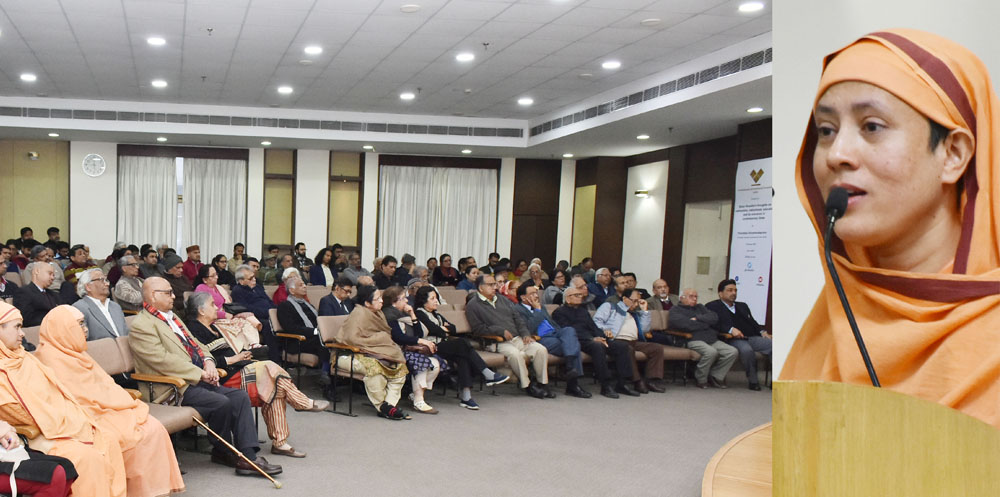
Nivedita did a lot to protect the interests of Acharya Jagadish Chandra Bose against the machinations of the British. She also extensively edited his writings and encouraged him throughout. She tried to persuade George Birdwood, the then Minister for Education, to grant approval for the scheme of setting up what is today the Indian Institute of Science (IISc) in Bengaluru, which was the fruition of Swamiji’s advice to Jamsetji Tata to set up an institute to train Indians in science and technology. Above all, of what she did for India, she never wanted any acknowledgement or publicity. She greatly encouraged and assisted Dinesh Chandra Sen in preparing the English version of his ‘History of Bengali Language and Literature’, and it was her earnest request to him not to acknowledge her debt publicly. Nivedita also encouraged the development of art. Following Swamiji, she was quick to understand and highlight that symbolism in nature was the quintessential feature of Indian art.
Mataji also talked about how Sister Nivedita was a pioneer in women’s education in India. She set up a school for girls in her residence in Kolkata. She said that in order to love India, women need to know India, and in order to know India, they need to meditate upon her. One of the students from her school, Saralabala Sarkar later recorded that once Nivedita sat down in front of these girls, with a rudraksha mala in hand, chanting the name ‘Bharatavarsha’, ‘Bharatavarsha’, ‘Bharatavarsha’. Saralabala remarks about Nivedita that India was the heart of her hearts, the soul of her souls. Benoy Kumar Sarkar, who later became a famous scholar of sociology, had remarked that if Vivekananda had done nothing else but only brought Nivedita to India, that itself would have been enough for posterity to remember his greatness.
Nivedita also designed a national flag for India. For this flag, she chose the symbol of Vajra or thunderbolt. There is this famous story about Sage Dadhichi. Once, Indra, the king of gods, was unable to defeat the demons and he was instructed that the only invincible weapon for him would be one that is made of the bones of the person who would happily lay down his life for this purpose. When Rishi Dadhichi was approached with this request, without a second thought, he immediately laid down his life, so that his bones could be used to make this weapon which came to be known as ‘Vajra’. This thunderbolt represents the highest ideal of sacrifice and selflessness. Nivedita explained: The selfless man is the thunderbolt. What could have been a better symbol for the national flag of India?
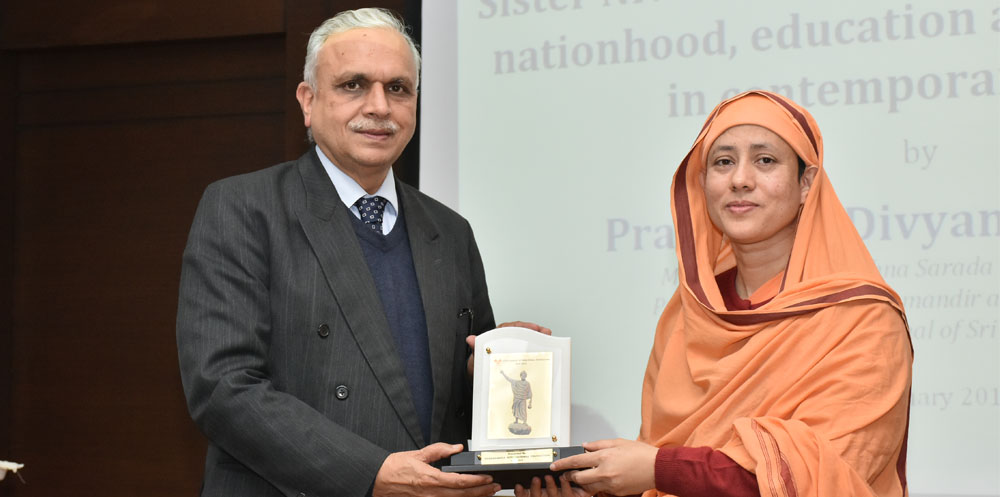
Nivedita emphasized upon the fact that Indians should develop a civic sense and that civic sense should translate into seva or service to the nation. She wrote that a nationalistic education was essentially an education in national idealism. She took the girls of her school to meet the great national Surendra Nath Banerjee. She also kept a charkha in her school to inspire her students about swadeshi. It is indeed fitting that her epitaph reads, “Here reposes Nivedita who gave her all to India.”
Mataji said that the contemporary relevance of Sister Nivedita’s life lies in the ideal of enlightened nationalism that she represented, based on the spiritual ideal of unity of all existence and the spirit of sanatana dharma or Vedic spiritual culture. Vivekananda had remarked that the culture of this land is so strong that it cannot be wiped out. Mataji pointed out that in India, we derive even our ancestry from rishis; this underscores the importance we lay on spirituality. Nivedita’s relevance lies in her ideal that desh prem, should get translated into desh seva, love of the country should translate into civic sense and service to the nation. Nivedita’s relevance lies in her insistence on the civilizational entity that is India that pre-dates all organized religions of the world. If we wish to pay our tribute to Nivedita, we can do so by inculcating the spirit of enlightened nationalism in us.




